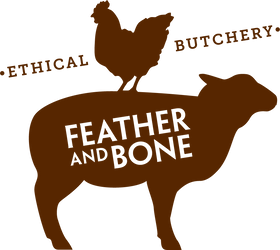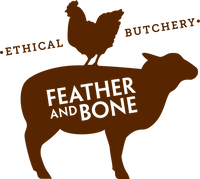What makes meat great?
Photo: Texel lambs beneath a lovely, spreading tree at Vince Heffernan's Moorlands biodynamic Farm near Dalton, NSW.
We believe great meat literally embodies the shared values of regenerative agricultural practices coupled with the use of appropriate genetics and feed sources, embedded in a chain of respectful relationships. And that means all of the relationships; soil to animal to farmer to truck-driver to slaughterer to us and to you.
It is the alignment of these relationships that produces what we consider to be great meat that is truly delicious.
Undoubtably, you can still produce good meat without all of these elements being aligned. But it won’t be great, because intention is important. And it’s this alignment of intention and practice that enriches us all.
However, with the best intentions in the world, sometimes our judgement fails us and we get it wrong. We find ourselves in a relationship where we realise that the shared intention and the chain of respectful relationships aren’t central to our mutual understanding. When that happens, it's best to face up to the problem, learn from it and move on.
And so it is with the ‘Margra’ branded Australian White lamb. We will no longer be buying whole carcasses from the producers of this product.
We will be sourcing Australian White lambs from other producers, but if you wish to seek out the Margra in particular, we believe it is being supplied as boxed and plastic-wrapped cuts to other distributors.
So this is us, moving on. Or perhaps, retracing our steps to return, happily, to first principles - transparency, respect and sustainability.
Fortunately, we're blessed to be part of a growing community of remarkable, regenerative producers with a genuine and passionate commitment to these principles. There is no shortage of excellent lamb produced by these clever, inspiring farmers... and that is truly great.
After we posted this, Vince Heffernan of Moorlands Farm (pictured) added the following comment.
I love that tree. On basalt country, it spreads it's limbs out wide. Pointing to the fact that this was a grassy woodland, never a forest. Now there are a row of trees adjacent, at thirty metre spacing, planted in October 2013 by visiting German backpackers. Why 30 m? Bird specialists note that the tiny, and often endangered, woodland birds will not risk an open crossing of more than 60m for fear of predation. So these stepping-stones allow safe passage from one planted woodland to another creating connections integral to native fauna's needs. (And for a random lightning strike in the centuries to come). Cheers, Vince





Leave a comment